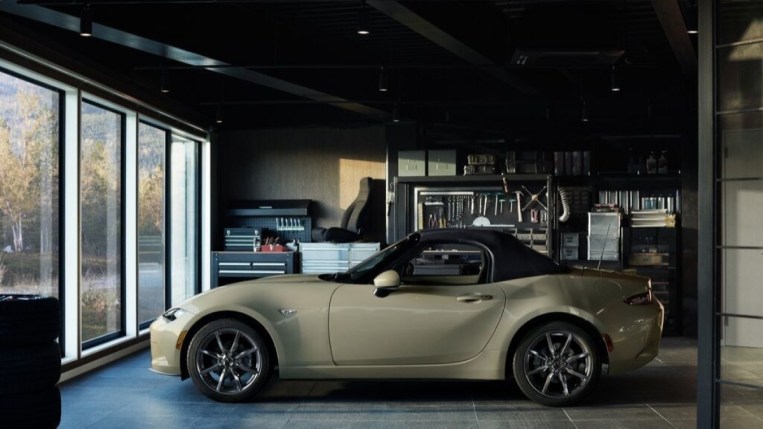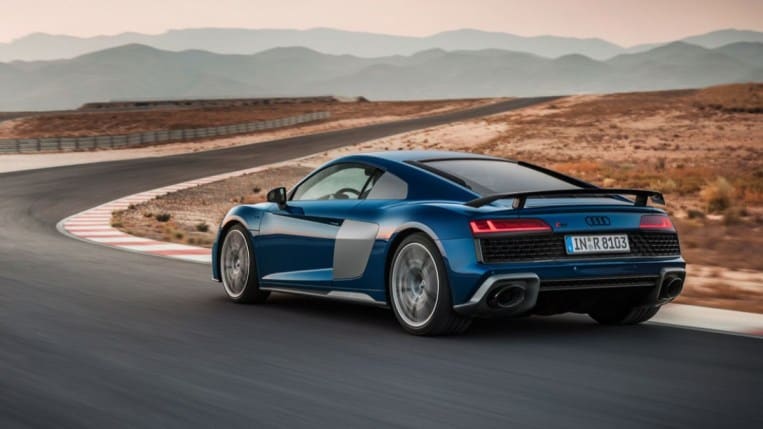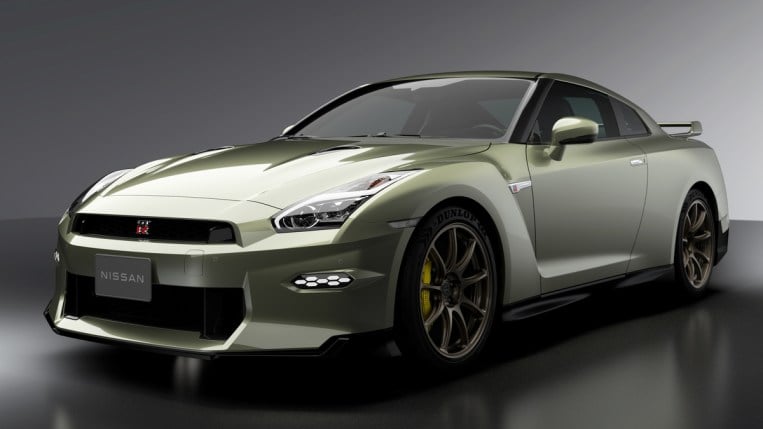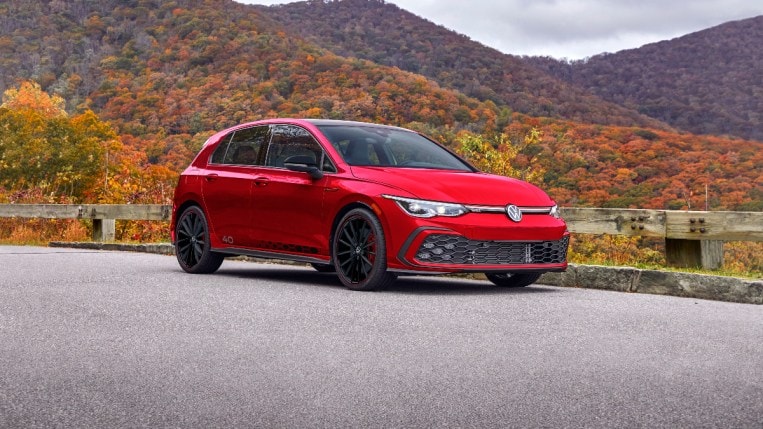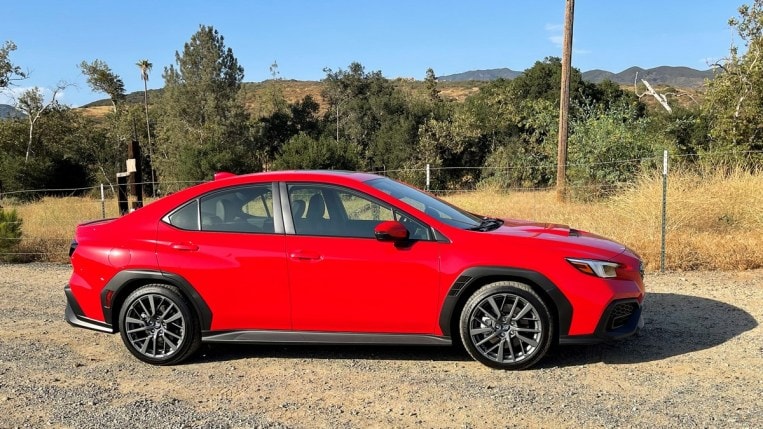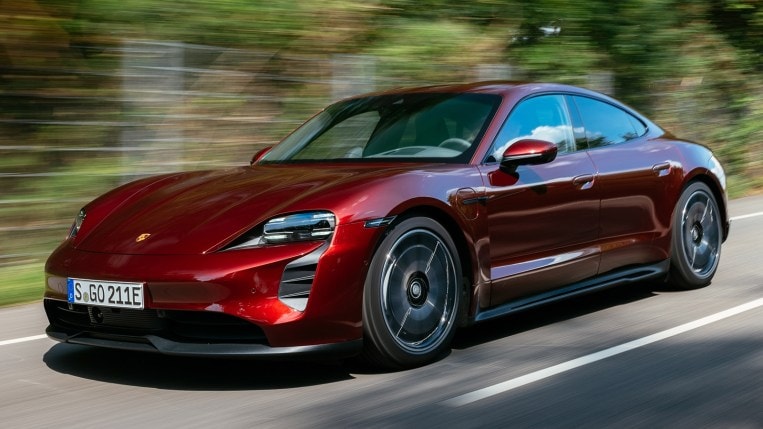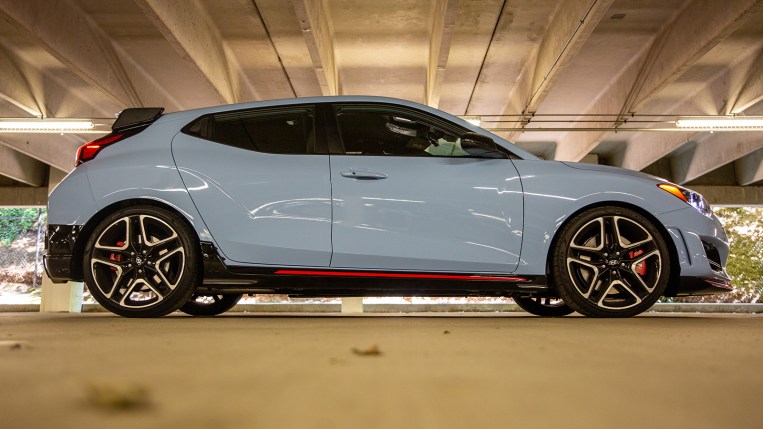Sports Cars Quick Facts
- Roadsters are the vehicles closest to the traditional sports car definition. They are 2-door, 2-seat convertibles.
- No one buys a genuine sports car for the mileage, cargo capacity, or cupholder count. What matters is how it handles and how fast it goes (or seems to go).
- The best way to determine if a specific sports car fits your wants and needs is to drive it.
Amid the vast array of cars made today, if you asked 100 people what defines a sports car, you might get 100 different answers. But for those seeking to buy a sports car, only those vehicles purposed for extreme performance will do.
Over the years, automotive analysts and enthusiast publications have debated which cars deserve the moniker “sports cars.” But more recently, the industry usually dubs the sports car designation only to mass-market vehicles that truly measure up. When they don’t, they immediately spark debate and correct course.
On the other hand, exotics, supercars, hypercars, and aftermarket modified performance cars rise above the definition of the average sports car. What distinguishes these categories are price, materials, performance, and exclusivity. Most of these high-end machines are in limited production and are thus hard to come by — even if you have the money.
In the arena of what we avoid labeling a sports car are some manufacturers’ sport trims, large sedans with big engines, and sport versions of SUVs. Although these vehicles may be excellent and powerful, they are not sports cars.
The following segments of this guide will help you sift through some examples and get a good deal on your next sports car after making your pick.
What Is a Sports Car?
The earliest definition of a sports car was a convertible seating two with improved performance and driving dynamics. Think Triumph TR6, Austin-Healy Sprite, or today’s Mazda MX-5 Miata or Audi TT Roadster. The more contemporary definition includes sports models that place performance above practicality and fun above function. Expect quick acceleration and agile cornering from these performance cars, but don’t expect a smooth ride. Feeling the road beneath your seat is not the most comfortable way to drive, but it is the most thrilling!
This expanded view of what makes up a sports car opens the list to vehicles with multiple doors, seats, and engines. And yes, gasp, even fixed roofs! Since this guide does not include a definitive list of current market sports cars (there are more than 100), we’ve culled some relevant types and examples to get you up to speed.
Types of Sports Cars
Here we will pursue the expanded definition of a sports car. Yes, there are several higher-performance, 2-seat convertibles on the market. However, more often than not, they are high-ticket vehicles from German or Italian carmakers.
Roadsters
Roadsters are the vehicles closest to the traditional sports car definition. They are 2-door, 2-seat convertibles. The least practical of the bunch, you buy one to have fun, get some sunshine on your face, and, sometimes, to show off. While typically expensive, it is possible to find a used luxury sports car under $40,000 if you want luxury on a budget.
The price range for the list below begins at about $28,000 for the Mazda MX-5 and runs to $171,000 for the Audi R8 Spyder, not including destination fees.
This set includes:
Coupes
Although some carmakers like Mercedes-Benz refer to a 4-door model as a coupe, by definition, coupes have two doors. They often feature a sloping rear roofline. The second-row seat, when offered, is usually little more than a cushioned package shelf.
The list below ranges in price from $28,400 for the Toyota GR86 to $113,540 for the Nissan GT-R.
Examples of this group:
Hatchbacks
Even if they’re not sports cars, most hatchbacks look the part. However, a small subset of hatchbacks provides better performance and handling than their run-of-the-mill competitors. In this segment, the door count doesn’t enter the equation. Usually, hatchbacks have four doors, though five if you include the hatch. However, that’s not always the case.
The hatchbacks we’ve listed below can range anywhere from about $30,500 to nearly $45,000 for a new model vehicle.
RELATED: Highest Horsepower Coupes
Sedans
Granted, pounding the square peg sedan into the round hole of the traditional definition of a sports car is a reach. But we’re fortunate to have established broader parameters for a sports car at the top of this guide, right?
Just because a car has four doors, a hardtop, and seats up to five doesn’t mean it can’t be a sports car. We might agree if you argued that a sporty sedan would in no way qualify. But some sedans can apply if your budget doesn’t allow for a weekend toy, and you need some degree of practicality in your fun machine. These machines make a fantastic compromise because they have more passenger space and cargo room, an athletic suspension, and a high-output engine.
Prices for the list below range from about $30,000 to $110,000 for the BMW M5. Here are some sedans to consider:
RELATED: Highest Horsepower Sedans
Electric Sports Cars
Electric vehicles (EVs) are growing more mainstream every day. Most carmakers have jumped into the act. Consequently, some very engaging, fun-to-drive electric cars are on the market. One universal quality among electric vehicles is their immediate response. It’s an advantage over gasoline-fueled cars. Whatever the pony count and peak torque, it’s all available the second you engage the accelerator.
Moreover, many EVs provide one-pedal driving. Depress the accelerator to increase speed and reduce pressure on the accelerator to slow down. Taking your foot entirely off the accelerator can bring the car to a stop. This function blends convenience with even quicker acceleration and braking response.
Typically, EVs require less maintenance than cars with an internal combustion engine (ICE). EVs don’t have all the mechanical moving parts of an ICE vehicle, and there is no transmission, oil changes, air filter changes, or radiator flushes.
On the downside, there is something visceral about manually swapping gears and hearing the rich roar of a high-performance internal combustion engine. There is also that range anxiety with EVs: Will my EV run out of juice before I get where I’m going?
Prices for the list below range from about $69,000 for the BMW i4 M50 to $105,000 for the Audi e-Tron GT.
Examples of electric sports cars include:
RELATED: Electric Cars 101: What You Need To Know About EVs
What to Consider When Buying a Sports Car
What you should consider when shopping for a sports car depends on how much of a sports car you want. You don’t need to worry about less-relevant details if you look for fun, performance, and a little wind in your hair.
No one buys a genuine sports car for the mileage, cargo capacity, or cupholder count. What matters is how it handles and how fast it goes (or seems to go).
Other considerations include using the vehicle for carpooling the kids, running shopping errands, and hauling stuff from the home improvement store.
Here are some things to think about:
1. Sports Car Pricing
The first question to ask yourself when researching any car is, can I afford it? Your answer shouldn’t be based solely on the transaction price and monthly payments but on the total cost of ownership. Chances are good your pick will require premium fuel, larger and more expensive replacement tires, and will cost more to insure. Because many performance models use specialized, lightweight parts, maintenance, and repair costs may be more than you want to spend. When answering the “can I afford it?” question, you need to factor in all the ownership costs. Use our 5-year Cost to Own tool to guide your budgeting needs.
We recommend you do some soul-searching in the early stages of your research and establish a realistic amount you can comfortably afford. Make sure it easily fits within your budget. Picking the model and trim that best suits your wallet can save you heartache down the road. We bring it up again below but consider buying used to reduce your depreciation hit and get the cost within your budget. If you are looking for a used sports car on a budget, plenty of used sports cars under $20,000 deserve consideration.
2. Power
Going fast plays a significant role in getting the most out of a sports car. The sports cars above are 4-cylinder, V6, V8, and even V10 engines. Electric vehicles don’t even have an engine. Some listed vehicles are faster than others.
RELATED: Do I Need a V8? Or is a V6 Good Enough?
Your pick may not be the quickest because it doesn’t need to be. It just needs to be fast enough for you and your comfort level. The idea is the overall driving experience. If the engine growl and exhaust note are essential to your experience, keep an ear out for that during your test drive.
3. Handling
A core reason to buy a sports car is better-than-average handling. Only an extensive test drive on various roads can affirm this trait. Key handling attributes are quick steering response, road-holding capability, minimal body roll or lean, and consistent, predictable behavior when pushed hard.
These are the attributes on which to focus during a test drive. Also, keep in mind, many high-performance cars don’t handle winter weather well.
4. Seating
No matter which among the above types of sports cars you shop, other than the sedans, none of them comfortably seat more than two. The rear seat in those that have one might accommodate small children. However, adults will suffer back there.
Size does matter in sports cars. Older and taller drivers may find it challenging to scrunch down into some of the lower, sleeker cars. Taller drivers may discover the driver’s seat in some sports cars lacking sufficient aft travel to accommodate their long legs. Stretching the tape to 6 feet 4 inches, one of our editors recommends the Porsche 911 as a solid choice for tall drivers.
5. Sports Car Trunk Space
Usually, the more sports car-like a car is, the less trunk space it provides. Carmakers measure the cargo-carrying room in cubic feet. Visualizing what 6 cubic feet looks like next to, say, 10 cubic feet can be a little challenging. Here’s a bit of help. If a regulation basketball were a cube rather than round, it would be roughly a cubic foot.
For example, the Mazda MX-5 Miata’s trunk will accommodate roughly 4.5 basketballs. You can stuff about 16 basketballs into the trunk of the Dodge Challenger.
Remember that folding that seat down can significantly increase trunk space in cars with a rear seat, even more so when that car is a hatchback.
6. Fuel Economy
Bigger and badder engines slurp more fuel. That’s a fact. As already noted, these same engines often require premium fuel. It’s a double whammy. You can reduce fuel costs by picking a smaller, more efficient sports car or choosing from the growing number of electric models.
Although most cars, even sports cars, are growing more fuel-efficient, you could compromise a bit in the mileage department for the performance you crave.
Manual Versus Automatic Transmissions
However, automatic transmissions have become more sophisticated and fuel-efficient in cars like the Acura NSX and Ford GT. Dual-clutch automatic transmissions (DCT) and paddle shifters have made believers out of many a manual-transmission diehard. Is one better than the other? There are good arguments for both. The choice is yours.
New Versus Used Sports Cars
There are good reasons to go either way. You can buy the exact car you want with a new car’s full manufacturer’s warranty. You don’t have to settle for a color scheme you don’t particularly care for or worry about how the previous owner treated the vehicle.
Buying used, however, makes good sense. That is especially true of high-performance and sports cars. According to data from Kelley Blue Book parent Cox Automotive, such vehicles tend to depreciate quicker than average, losing as much as half their value in the first two or three years. As a result, it makes sense to find your sports car pick among models two to three years old. If you are in the market for a used car, many used sports cars are available for under $30,000.
Your pre-owned car should cost less to insure, too. Be sure to check out any certified pre-owned (CPO) models in your dealer’s inventory. These have been inspected and provide some factory-backed warranty protection.
Steer clear of any models with super-high mileage or heavily modified vehicles with aftermarket performance parts. Have a mechanic or inspection service check it out if you find a used car you want that isn’t CPO.
Sports Car Test Drives
You won’t know until you know, and the best way to find out if a specific sports car fits your wants and needs is to drive it.
Tell the salesperson or used-car owner you need to take it on an extensive test drive on various roads. Your goal isn’t to test the car’s limits but to feel how it performs. Try to keep an open, critical mind. Driving a car you desperately want can be exciting. Don’t let your feelings override your good judgment.
Concentrate on how it accelerates, corners, and generally feels on uneven pavement. Can you find a comfortable driving position? Do the clutch and gearbox perform smoothly if it’s a manual transmission? Does the brake pedal operate predictably?
RELATED: Highest Horsepower Convertibles
Making the Deal
Your research should have included discovering the book value of the particular car you want to buy. That’s easy to do when you use the Kelley Blue Book valuation tool. You can also find out what other vehicles like your pick are selling for in your area. Finding a price point matching KBB.com is especially critical if you buy used.
If you aren’t taking advantage of a factory-backed financing special at a dealership, make sure to get a pre-approval from your bank or credit union before car negotiations begin. This way, you know exactly the car you can afford, and you’ll be able to negotiate from a position of strength.
Never but never be afraid to walk away. If the deal you want is realistic, but the seller won’t budge, walk away. Even in today’s tight car market, there are other cars out there. Do a little more research and find one. Have fun — that’s what sports cars are all about.
Related Car Buying Articles
Source link



